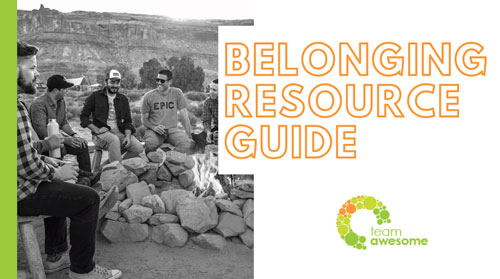Compassion can be defined as a “sympathetic consciousness of others’ distress together with a desire to alleviate it” (Merriam-Webster Dictionary). Therefore, turned inward, self-compassion could be that same sympathetic consciousness of your own distress, and an aspiration to improve it.
I am exploring self-compassion because it has synchronistically come up several times around me this week, and frankly, I could use some practice myself. I am hoping that organizing my thoughts on the topic and sharing them with you helps lead to my own leveling up at self-compassion this week.
Some of the most compassionate people I know simply do not give their own compassion to themselves. Perhaps it hasn’t occurred to them to provide it, or maybe they have focused only on being of service to others rather than themselves. Conceivably, this is because compassion is one of the hardest things to give ourselves until we have first given ourselves permission to do so and practiced the rare exercise of actually allowing ourselves compassion.
Sometimes we are the ones that need it the most. Certainly, the person we need compassion from more than anyone else is our self. If so, why aren’t we better at it yet? There are plenty things that can block our self-compassion including fear, feeling not enough, or playing the martyr. If we look back to the definition, we may very well be conscious of our own distress but lacking the will to alleviate it.
What does self-compassion look like?
It may look like allowing the stress of something that doesn’t really matter melt away. It may appear as showing up just as you are, even when only showing up (and nothing more) is the best that you can do during a dark time. It may be just sitting in the dark feelings, really feeling them, and then moving out when you are ready. It may look like allowing others in, to see you and help you. It may mean being vulnerable – changing nothing about who you are and simply allowing yourself to be seen exactly in the truth. In her book, When Things Fall Apart, Pema Chödrön writes, “So even if the hot loneliness is there, and for 1.6 seconds we sit with that restlessness when yesterday we couldn’t sit for even one, that’s the journey of the warrior.” Author Glennon Doyle revisits this phrase in her own dark times in her memoir, Love Warrior.
Give yourself some credit – You adjusted, you came, you showed up.
We tend to feel the struggle, the inner conflict between right and wrong, or past, present and future. We assume it has to be hard, painful even. While the universe throws back the same lesson over and over again waiting for us to catch on to the lesson it is teaching, we sit in the hardship. Don’t get me wrong, there is value in the struggle, but how many times have we sat in the struggle much longer than we needed to because we simply couldn’t afford ourselves the self-compassion to move past it?
Ways to allow self-compassion
Here are a few ideas that I am practicing this week to honor self-compassion, perhaps you can use them as well to find yours.
Ask yourself about a struggle: “What if it was easy, what would it look like?” Envision what you are struggling with to be easy, free, and without force. What changed to make it that way?
In Mark Nepo’s The Book of Awakening, he offers the following wisdom:
“When feeling urgent, you must slow down…What we need is always harshly and beautifully right before us, disguised in the wrapping of our nearest urgency. We just refuse to accept this, because it feels so difficult to face.”
In other words, when you don’t want to rest is exactly when you need it. I have found that my capacity for self-compassion, intuition, or simply listening to myself is throttled when I don’t allow myself the blank space, time for reflection, and rest that I need. When I feel myself spinning my wheels, I am reacting by being still.
Imagine that you are your best friend, a loved one, or someone you for whom you have a lot of care and respect. If you were talking to them, what compassion would you give to them without hesitation? Imagine it in detail, then transfer it to yourself.
What other ways do you practice self-compassion? Asking for a friend.
About the author:
Katie Rasoul is the Chief Awesome Officer for Team Awesome, a leadership coaching and culture consulting firm. Find out more by visiting www.teamawesomecoaching.com or join the Team Awesome Community for awesomeness coming straight to your inbox. Follow Team Awesome on Facebook and Twitter.



Fantastic article!